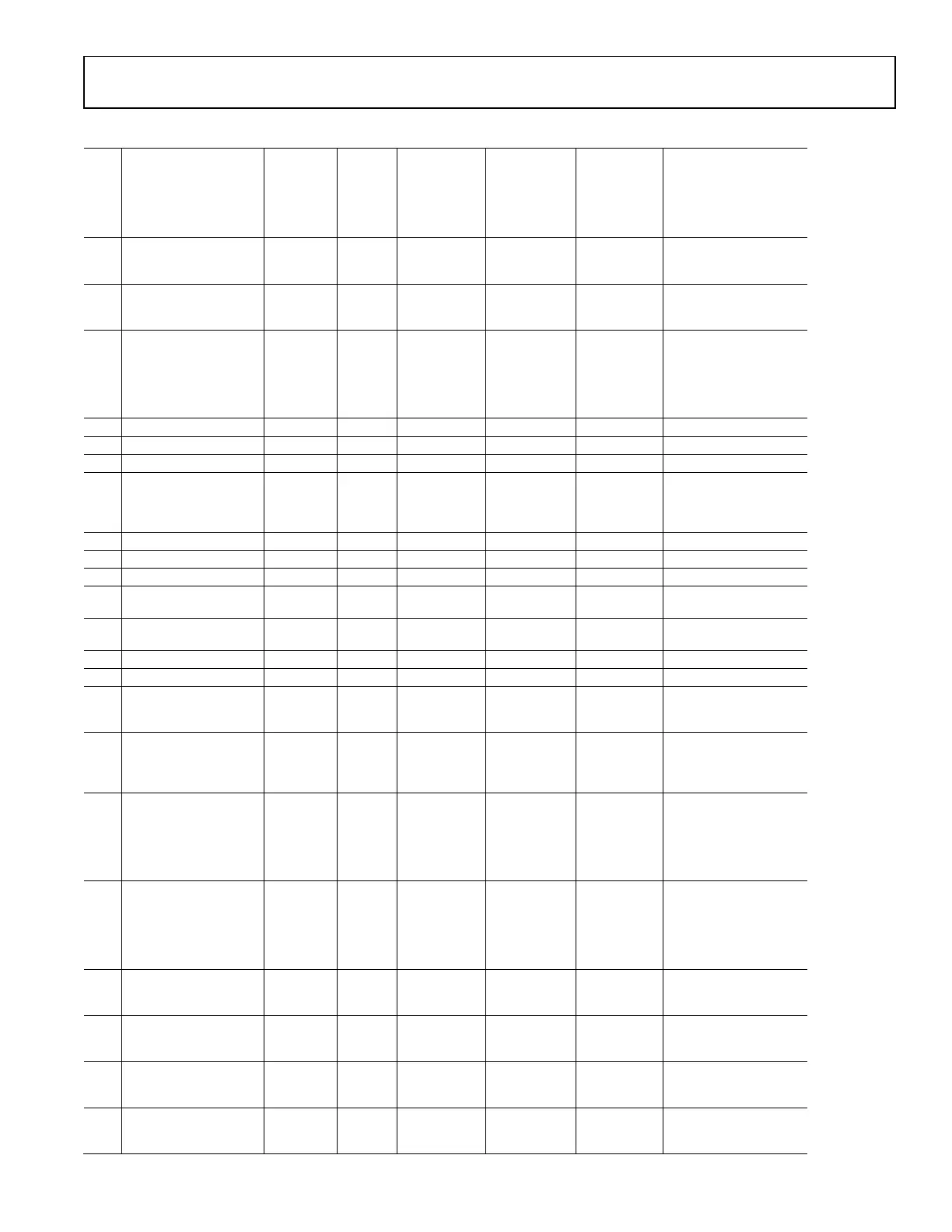Preliminary Technical Data UG-1828
Rev. PrB | Page 149 of 277
The power measurement block has a dynamic range of 60dB. Signals lower than −60 dBFS may not be measured accurately. The power
masurement could be read through the API function adi_adrv9001_Rx_DecimatedPower_Get().
AGC CLOCK AND GAIN BLOCK TIMING
The AGC clock is the clock which drives the AGC state machine. In ADRV9001 device, the default AGC clock (to support a set of
standard sample rates) is at 184.32 MHz. When arbitrary sample rate is adopted in Rx, the AGC clock could vary.
The AGC state machine contains 3 states: Gain Update Counter, followed by the Slow Loop Settling (SLS) Delay, and 5 AGC clock cycles
delay. The total time between gain updates (gain update period) is a combination of slowLoopSettlingDelay and 5 AGC clock cycles.
(Note the first slowLoopSettlingDelay in grey is a part of Gain Update Counter.)
GAIN UPDATE COUNTER
5 AGC
CLOCK
CYCLE
IMMEDIATE
GAIN
ATTACK
GAIN
ATTACK
TYPE 1
SLOW
LOOP
SETTLING
DELAY
SLOW
LOOP
SETTLING
DELAY
SLOW
LOOP
SETTLING
DELAY
5 AGC
CLOCK
CYCLE
GAIN UPDATE COUNTER
GAIN
ATTACK
TYPE 2
YES
GAIN
RECOVERY
DELAYED
GAIN
RECOVERY
GAIN
RECOVERY
YES
24159-116
Figure 143. Delayed Gain Attack for Nondelayed Gain Recovery
Figure 142 outlines the operation of the AGC state machine. The diagram outlines possible gain change scenarios rather than a practical
example of AGC operation. The possible gain change scenarios are described below:
• AGC Gain Attack within gain update counter, but more than an SLS delay before the gain update counter expiry – Because slow
loop settling (SLS) is typically several orders of magnitude smaller than gain update counter, this is the most common gain
decrement scenario. This type of AGC Gain Attack is named as Gain Attack Type 1 as shown in Figure 142.
• AGC Gain Attack within gain update counter, but within a SLS delay before the gain update counter expiry – This is a special case,
which will rarely occur in applications per the reasoning in 1). This type of AGC Gain Attack is named as Gain Attack Type 2 as
shown in Figure 142.
• AGC Gain Recovery at the end of the gain update counter – Note that when fast recovery is enabled, the gain update counter is
substituted with the low under range interval, per Figure 115. A gain attack may occur within the gain update counter when fast
attack is enabled. A gain recovery event may only occur at the end of gain update counter (or low under range interval in “fast
recovery” mode) as previously discussed. This is mainly for aligning the gain recovery (for desired signal) with the frame or
subframe boundary. After a gain attack, a gain change counter with a value equal to the SLS delay is started. No further gain attacks
are allowed while this counter is running. This allows the minimum time to be set between gain changes.
However the gain change counter also prevents the AGC from moving from the gain update counter state to the slow loop settling delay
state since it must wait until the expiry of the SLS delay. Therefore if a gain attack occurred very close to end of the gain update counter
state, the gain change counter would delay the start of the SLS state and shift the gain recovery event as shown in Figure 142. Whereas in
Figure 143, gain recovery event is always aligned with the vertical dash lines.

